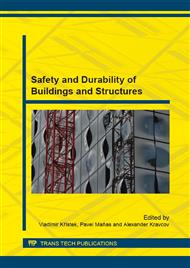p.1
p.13
p.25
p.35
p.43
p.53
p.69
p.77
Durability of Composites Based on Asphalt
Abstract:
High traffic load and high temperatures are two crucial aspects, which cause together with static treatment of transport, respectively slow traffic, permanent deformations in the construction of flexible pavement (the cover layer of asphalt). Standard asphalt adjustments are not able to withstand such loads. For these reasons they are looking at ways to increase the functionality of asphalt mixtures and extend their lifespan, respectively delay condition, where it is not possible to use it comfortably. On the road is necessary to look at the whole life cycle and give priority in justified cases to demanding investment solutions, which thanks to longer durability and longer repair cycle will be cheaper. Such solutions are composite materials based on asphalt. Among them are technology of asphalt and cement composite (ACC), which uses strengths of both used materials, or by analogy with the principle of concrete reinforcement in asphalt mixtures. This article presents the characteristics of both technologies, their properties and points to the longer life of the construction of roads in their application.
Info:
Periodical:
Pages:
25-33
Citation:
Online since:
October 2015
Authors:
Keywords:
Price:
Сopyright:
© 2015 Trans Tech Publications Ltd. All Rights Reserved
Share:
Citation:


